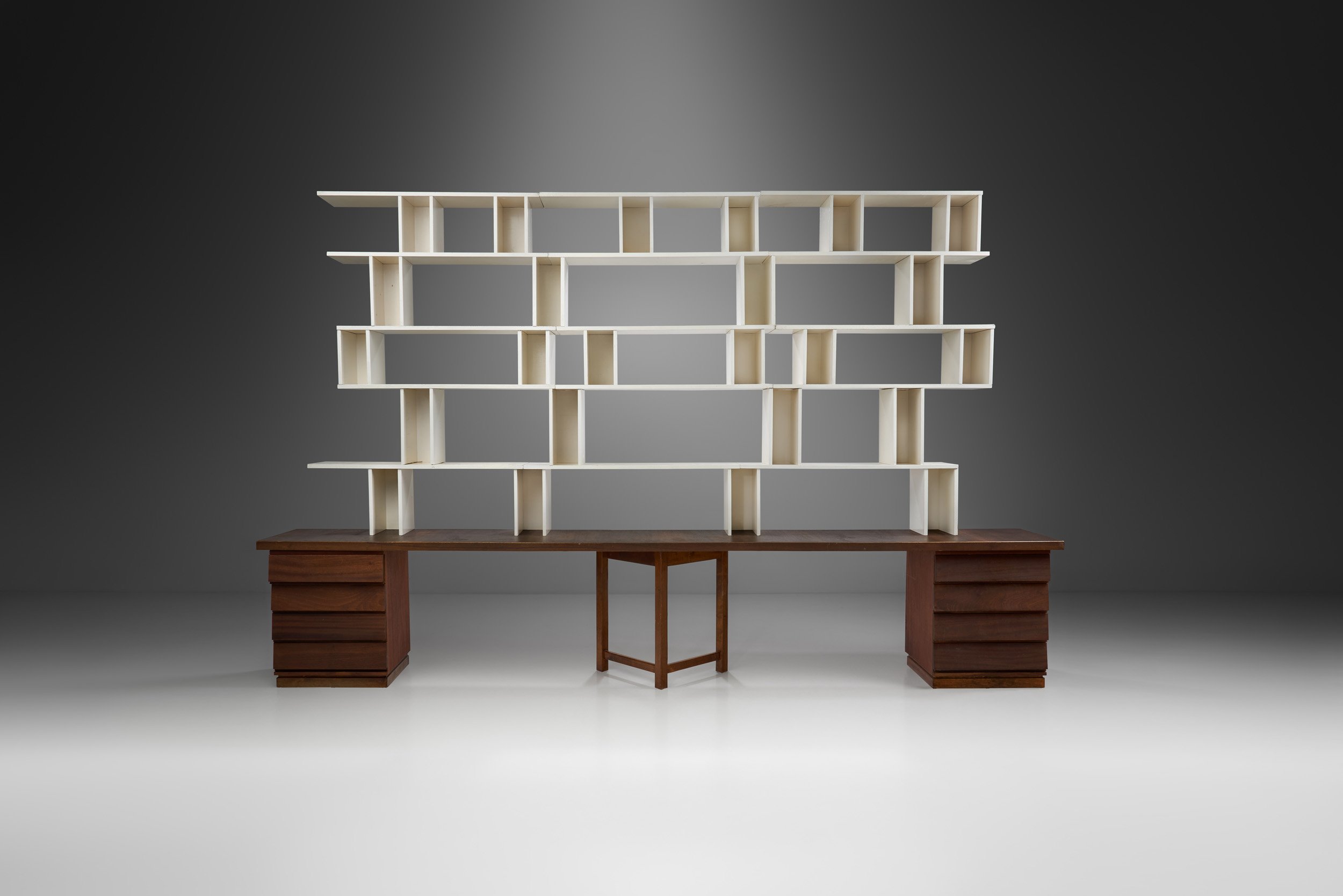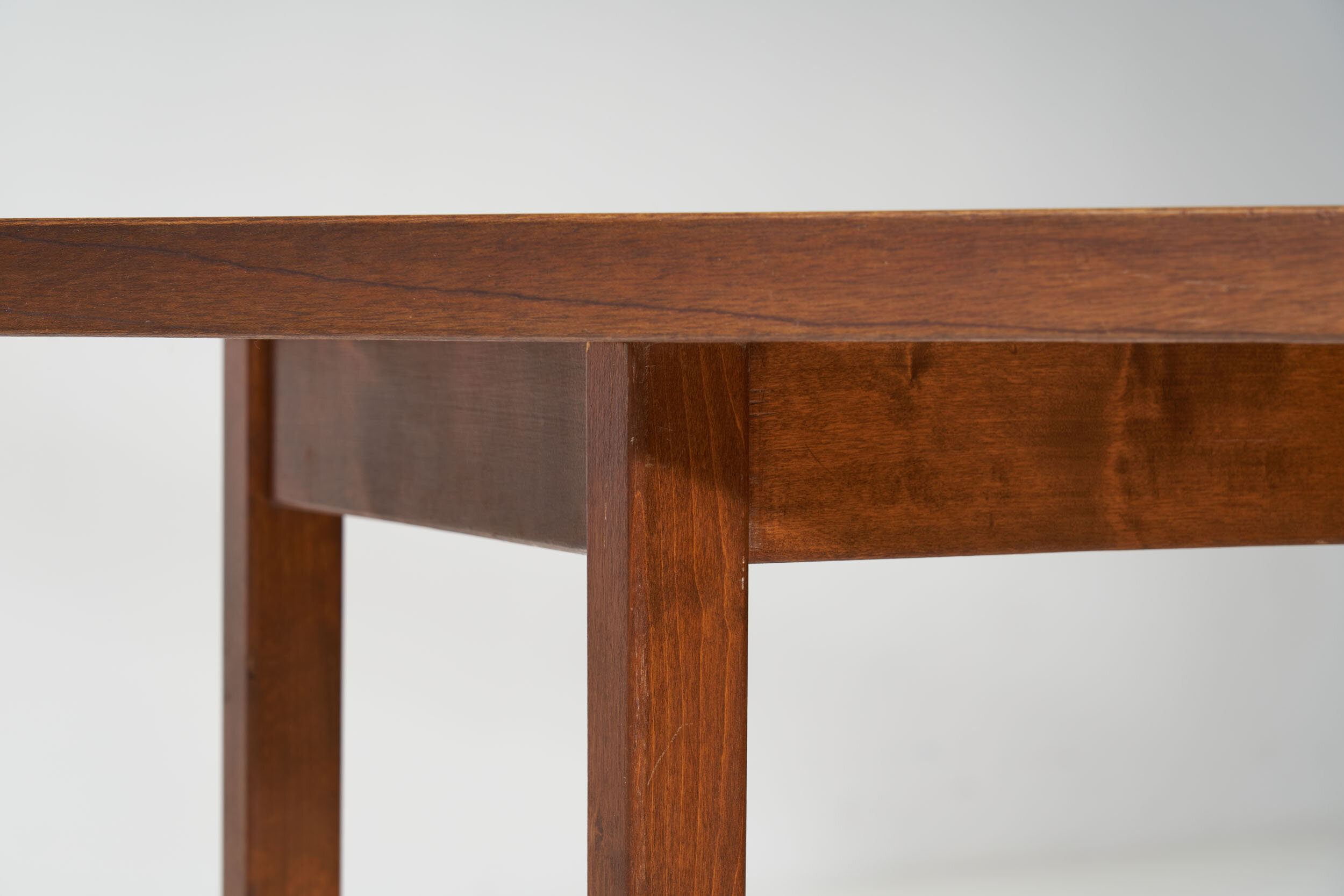Carl Gustaf Hiort af Ornäs “Välipala” Shelf System for HMN Huonekalu Mikko Nupponen, Finland 1950s






















Carl Gustaf Hiort af Ornäs “Välipala” Shelf System for HMN Huonekalu Mikko Nupponen, Finland 1950s
REQUEST PRICE HERE
Pricecategory: 20,000 - 30,000 usd / eur
This “Välipala” shelf is, for a lack of better words, stunning. The versatile modular system is eye-catching for its unique, architectural design, and for its quality materials and the craftsmanship that was required for its creation.
This Välipala shelf unit was designed in the late 1950s, and insightfully showcases Hiort af Ornäs’s aim for highly individual design. The name means “snack” in Finnish, referring to the blocks that can be freely arranged between the shelves to create unique combinations. The possibilities are countless, as the number of shelves and the height and width of the units can be adjusted to one’s heart’s content. The shelving system is raised on a bench that has a teak veneered body with two drawer units and a triangular leg in the middle, known as the “kolmiojalka”, that is one of the designer’s famous and returning details. The light and airy, ingenuous design stems from sophisticated, carefully thought-out solutions. The middle blocks taper towards the front, which creates a lovely interplay of light and shadow. The handcrafted details form an elegant backdrop that accentuates displayed books and treasured objects. This model is very functional, with plenty of storage space, but even if left “empty”, it is visually stunning. The contrast between the teak veneered base and the white-painted shelves adds an interesting and modern touch, suitable for any space.
This model was created at Mikko Nupponen’s workshop, a Finnish furniture manufacturer once located in Lahti, where he produced high-quality furniture using handicraft methods. Hiort af Ornäs designed Välipala as a storage solution for modern homes. However, it turned out to be much more: the unique design and elegant finishes have sealed its status as a timeless classic, much sought out to this day.
Condition:
In good vintage condition. Wear consistent with age and use. Some scratches and marks on the wood.
Dimensions:
131.89 in W x 18.89 in D x 86.61 in H
335 cm W x 48 cm D x 220 cm H
About the designer:
Carl-Gustaf Vilhelm (nicknamed “Nalle”) Hiort of Ornäs was born on 27 February 1911 and lived most of his life in Tapiola/Espoo in Finland and in his later life moved to Spain. He is remembered as a Finnish interior architect and designer known to be uncompromising.
Before the Finnish wars (1939-1944), Hiort af Ornäs spent his time in Pori, working at Björneborgs Mekaniska Verkstad. He studied at the Helsinki University of Technology to become an architect but never graduated. He did, however, become known as an interior designer, and eventually even more known as a furniture designer.
In 1945, Hiort af Ornäs founded the furniture company Puunveisto Oy, for which he developed versatile techniques for shaping plywood. He started the furniture manufacturing shop on Lauttasaari in Helsinki (Veneentekijäntie 14) together with his brother. The wood shop, showroom and office were all located in the same building in Helsinki. Rolf Mesterton was the man in charge of producing the furniture, but there were several other carpenters at work in the woodshop. Hiort af Ornäs’s furniture was exhibited and sold by the shop Nupponen who also distributed Olavi Hänninen’s designs, while Puunveisto’s furniture were also sold by Gösta Westerbergs Möbler in Stockholm, Sweden but, in spite of a good selection of chairs, tables and shelves, did not do too well. Since production costs were high, Hiort af Ornäs faced economic troubles. The company was later sold to Nupponen after which Hiort af Ornäs’s interest in the company waned.
Hiort af Ornäs spent his retirement in Spain, and designed several buildings for Fuengirola’s Los Pacos neighbourhood, which has a large Finnish population. His house that he drew and built in Tapiola, Espoo, Finland, ‘Villa Hiort’, still stands and houses some of the designer’s original drawings. It is a beautiful example of 1950s Modernism and the talent of Hiort af Ornäs that brought him recognition that lasts to this day. ~H.





